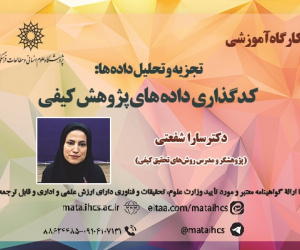انقلاب هوش مصنوعی و پویایی های مارپیچ سه گانه در اقتصاد (مقاله علمی وزارت علوم)
درجه علمی: نشریه علمی (وزارت علوم)
آرشیو
چکیده
این پژوهش به بررسی اثرات تحول آفرین انقلاب هوش مصنوعی بر پویایی های مدل مارپیچ سه گانه (تعامل بین دانشگاه، صنعت و دولت) و تأثیر آن بر توسعه اقتصادی می پردازد. مدل مارپیچ سه گانه، به عنوان یک چارچوب نظری برای تسهیل نوآوری، نقش مهمی در هدایت جریان دانش و تقویت همکاری های بین بخشی ایفا می کند. با ظهور فناوری های هوش مصنوعی، مرزهای سنتی میان دانشگاه ها، صنایع و دولت ها کمرنگ شده و نقش ها و تعاملات این ارکان بازتعریف شده اند. در این مطالعه، با بهره گیری از یک مدل سیستمی پویا، شوک ناشی از انقلاب هوش مصنوعی بر سازوکارهای خلق دانش، توسعه فناوری، و همکاری های بین بخشی، شبیه سازی و تحلیل شده است. یافته ها نشان می دهد که کارایی بالاتر دانشگاه ها در خلق دانش، حمایت های هدفمند دولت، و تعاملات قوی تر با صنایع پیشرفته، به طور قابل توجهی می توانند تأثیرات مثبت هوش مصنوعی بر رشد و توسعه اقتصادی را تقویت کنند. همچنین مشخص شد که کشورهایی با سهم بالاتر از صنایع پیشرفته و فناوری محور، مزایای بیشتری از این انقلاب خواهند برد. این پژوهش بر اهمیت سیاست هایی نظیر تقویت بوم سازگان های نوآوری، حمایت از خوشه های دانش بنیان، گسترش سرمایه گذاری در فناوری های پیشرفته، و ارتقای همکاری های بین دانشگاه ها، صنایع و دولت ها تأکید دارد. یافته ها نشان می دهد که توسعه اقتصادی پایدار در عصر هوش مصنوعی مستلزم رویکردی جامع و هم افزا میان این سه رکن اساسی است.AI Revolution and the Triple Helix Dynamics in Economy
This study examines the transformative effects of the Artificial Intelligence (AI) revolution on the dynamics of the Triple Helix model—interactions among universities, industries, and governments—and its implications for economic growth and development. The Triple Helix framework, as a theoretical model for facilitating innovation, plays a pivotal role in directing knowledge flows and fostering cross-sectoral collaboration. The advent of AI technologies has blurred traditional boundaries among universities, industries, and governments, reshaping roles and interactions within the innovation ecosystem. Using a dynamic general equilibrium model, this research simulates the impacts of an AI-induced shock on mechanisms of knowledge creation, technological advancement, and intersectoral collaboration. The findings reveal that greater efficiency in university knowledge production, targeted governmental support, and stronger collaboration with advanced industries significantly enhance the positive effects of AI on economic growth. Additionally, countries with a higher share of advanced, technology-driven industries stand to benefit more from this revolution. The study underscores the importance of policies that strengthen innovation ecosystems, support knowledge-based clusters, expand investments in advanced technologies, and promote collaborations among universities, industries, and governments. The results suggest that sustainable economic development in the AI era requires a comprehensive and synergistic approach among these three critical pillars.







